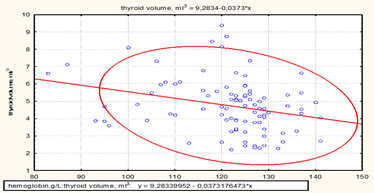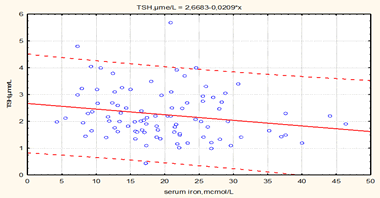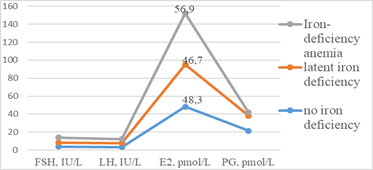Pediatrics & Therapeutics
Open Access
ISSN: 2161-0665
ISSN: 2161-0665
Short Communication - (2021)Volume 11, Issue 9
Iron deficiency is a common form of micronutrient deficiency and the iron deficiency causes anemia which has a significant effect on the development of children. Iron deficiency mainly occurs in pregnancy due to their improper or insufficient lack of diet. Iron deficiency occurs when there are low levels of iron in the body. When there is a lack of iron in our body there would be insufficient red blood cells (RBC) those which help in transfer of oxygen (Haemoglobin). Iron deficiency is sometimes caused by the lack of absorption of iron in our body due to some of the disease like Celiac disease, Crohn’s disease and Gastric bypass surgery [1-3]. It can also be caused by taking many antacids and tetracycline. Iron deficiency leads to shortness of breath, fatigue and weakness in some individuals. The relevance of the topic is due to the continuity of disorders of the hormonal system of both the adolescence and adulthood which is the common pathogenesis [4-6]. The complex and mutually regulatory relationship between the pituitary thyroid and reproductive systems and the presence of a population significant iron deficiency justify the feasibility of studying the problem [7,8].
94 girls aged between 15 to 17 years were taken and examined. We have conducted medical history, examination and determination of indicators of clinical analysis of a Complete Blood Count (CBC), peripheral blood, serum iron, Haemoglobin, serum ferritin and soluble receptors for transferrin (sTfR), Thyroid Stimulating Hormone (TSH), free thyroxine (cT4), titer of Antibodies To Thyroid Peroxidase (A-TPO) Follicle Stimulating Hormone (FSH), Luteinizing Hormone (LH), Estradiol (E2) and progesterone (PG), ultrasound of the thyroid gland.
The value of the thyroid volume in adolescent girls in the group with IDA is higher than that without ID (U=345.5; p=0.005). A correlation was established between HB and thyroid volume (R=-0.33; p=0.001). In conditions of sideropnia, the risk of goiter increases-OR 10.0; 95% CI (1.3; 79.0) A correlation between TSH and SJ was revealed (R=-0.43; p=0.036). The lowest level of progesterone in the II phase of the menstrual cycle was determined in girls with IDA, the highest without iron deficiency (p=0.024). Correlation was established between FSH and RBC (R=0.621; 0.004), FSH and MCH (R=-0.45; p=0.042), PG and HB (R=0.44; p=0.035). The revealed differences in the level of progesterone in the second phase of the menstrual cycle are manifested by a violation of its regularity, most often in girls with IDA (2=0.08; p=0.019) (Figures 1 and 2). The significance of differences (p<0.05*), p1 between groups of girls with iron deficiency anemia and latent iron deficiency, p2 between groups of girls with latent iron deficiency and without iron deficiency, p3 between groups of girls with iron deficiency anemia and without iron deficiency (Figure 3).

Figure 1: Graph of thyroid volume (ml3) and hemoglobin level (HB,g/L).

Figure 2: Graph of the level of TSH, μME /L and serum iron (μmol/L).

Figure 3: Hormone levels of the second phase of the menstrual cycle.
The study found a high prevalence of sideropenia among adolescent girls. Iron deficiency has a negative effect and does not show any effect on both the thyroid status and menstrual function it does not even show any disrupting in the cyclicity. Thus, the early detection of iron deficiency should be more important and the conduct of timely preventive measures aimed at maintaining and improving the health of adolescent girls are justified.
None
The authors declare no conflict of interest in respect of this publication.
Received: 25-Aug-2021 Accepted: 08-Sep-2021 Published: 15-Sep-2021 , DOI: 10.35248/2161-0665.21.11.398
Copyright: This is an open access article distributed under the terms of the Creative Commons Attribution License, which permits unrestricted use, distribution, and reproduction in any medium, provided the original work is properly cited.